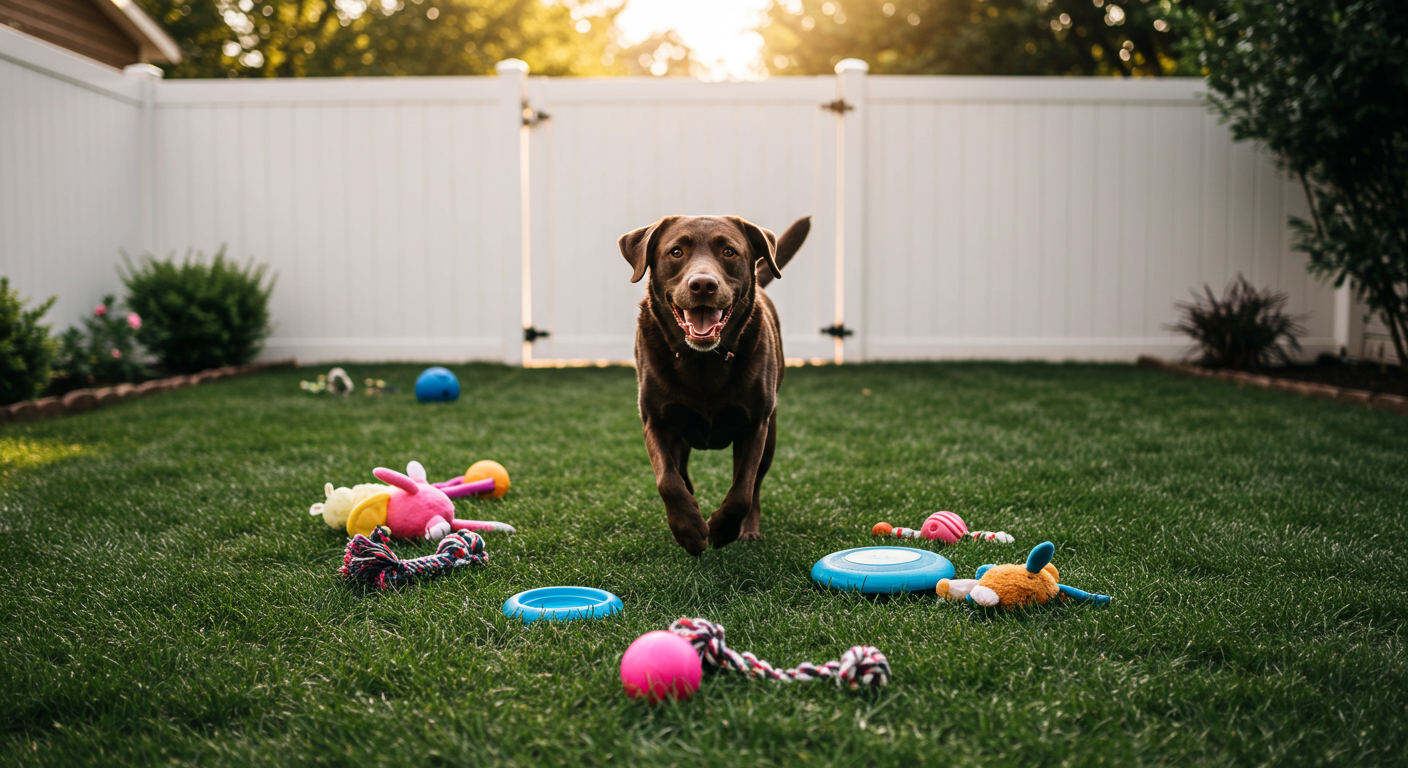Transform your backyard(private yards) into a canine paradise without breaking the bank. Whether you’re dealing with a small space, a persistent digger, or grass-free zones, your yard can become your dog’s favorite playground with the right approach.
Table of Contents
- Creating Dog-Friendly Spaces on Any Budget
- Solutions for Dogs That Love to Dig
- Grass-Free Backyard Options
- Maximizing Small Spaces for Big Fun
- Maintaining a Beautiful Yard with Dogs
- Creative Side Yard Transformations
- Interactive Training Zones
- DIY Agility and Play Equipment
- Sensory Gardens for Dogs
- Weather-Proof Year-Round Activities
- Safety Considerations and Hazard Prevention
- Maintenance Tips for Dog-Friendly Yards
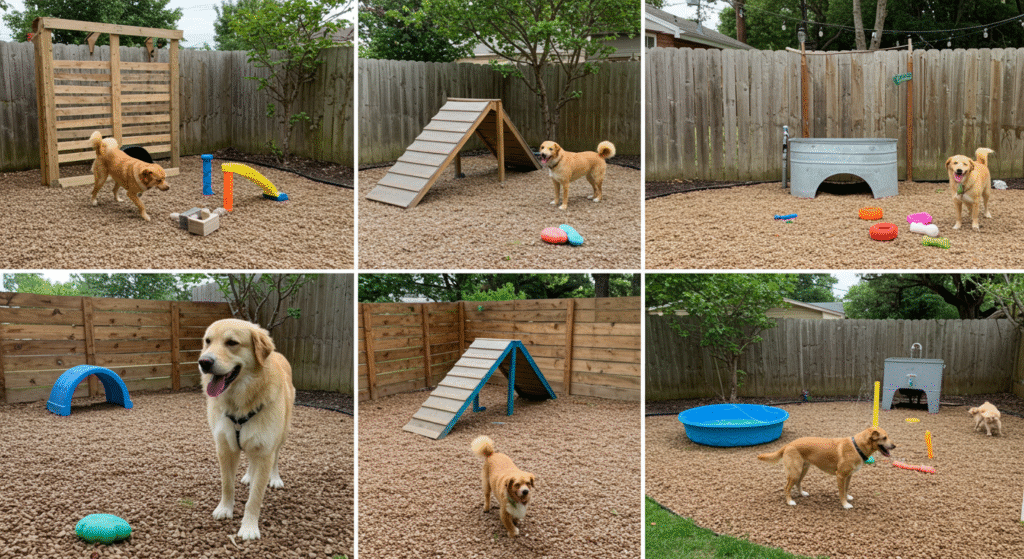
Creating Dog-Friendly Spaces on Any Budget
Budget-conscious pet parents can create amazing outdoor experiences without expensive renovations. Dog-friendly backyard ideas on a budget start with repurposing everyday items you already own.
Cardboard boxes become tunnels and hideouts. Old tires transform into jumping obstacles or digging zones filled with sand. Pool noodles work perfectly as agility poles when stuck into traffic cones or buckets.
Consider these cost-effective additions:
- Kiddie pools filled with balls or sand for sensory play
- Rope toys tied to tree branches for tug-of-war games
- Wooden pallets arranged as platforms for climbing
- PVC pipes connected to create puzzle feeders
The key lies in thinking creatively rather than spending extensively. A $20 investment can yield months of entertainment when you focus on versatile, multi-purpose items.
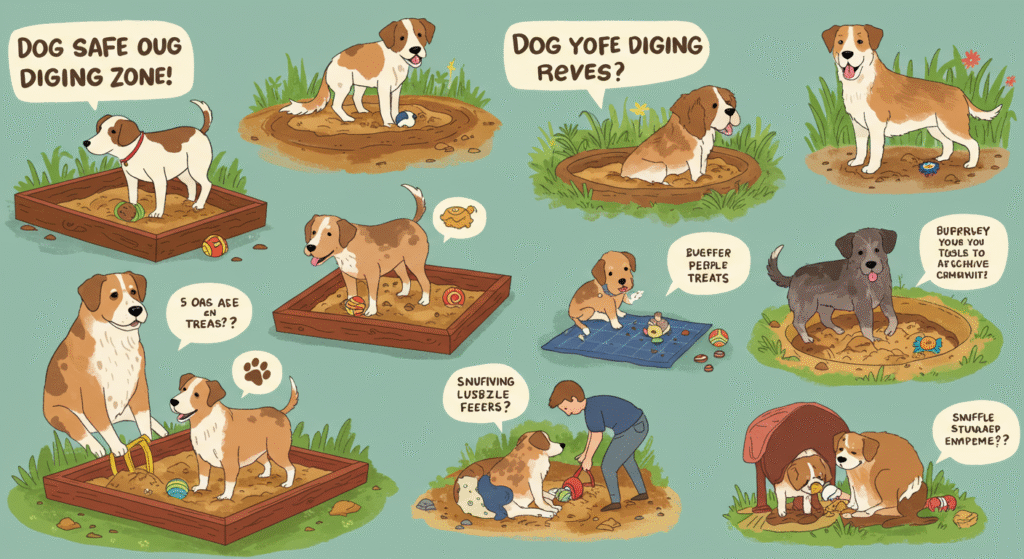
Solutions for Dogs That Love to Dig
Backyard ideas for dogs that dig require strategy, not surrender. Instead of fighting your dog’s natural instincts, channel them productively.
Designate official digging zones using sandbox frames filled with sand or loose soil. Hide treats and toys in these areas to make them irresistible. Place these zones away from flower beds and lawn areas you want to preserve.
Create barriers around no-dig areas:
- Chicken wire laid flat under mulch deters digging
- Large rocks or decorative stones block access to sensitive areas
- Motion-activated sprinklers provide gentle deterrence
- Coffee grounds or citrus peels act as natural repellents
For persistent diggers, consider raised garden beds that physically separate plants from paws. Underground fencing also works well for containing enthusiastic excavators.
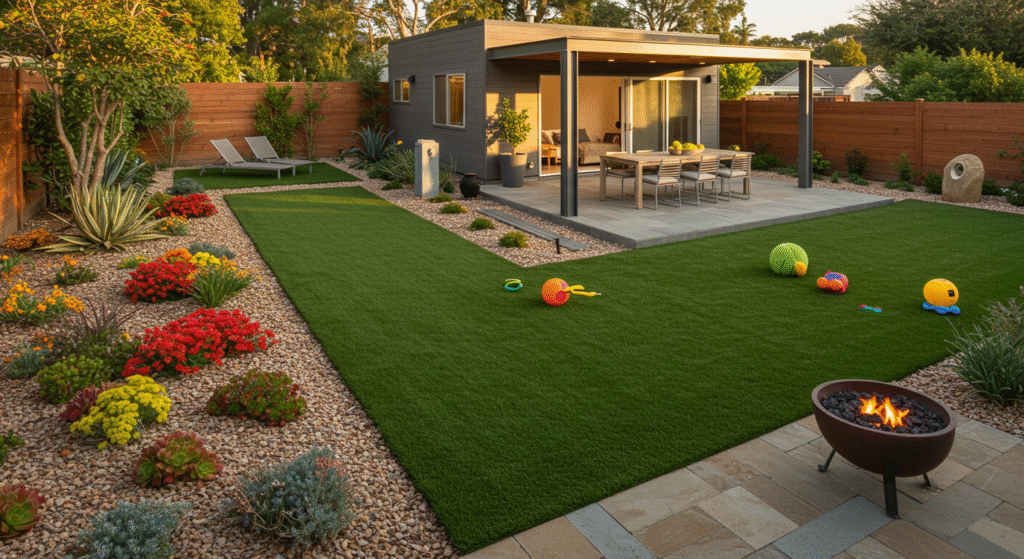
Grass-Free Backyard Options
Dog-friendly backyard no grass solutions offer durability and easy maintenance. Artificial turf provides the look of grass without the damage, though quality varies significantly.
Decomposed granite creates stable, permeable surfaces that drain well and feel comfortable under paws. Rubber mulch offers cushioning for active play while resisting weather and pests.
Ground cover alternatives include:
- Clover lawns that self-repair and stay green
- Moss gardens for shaded areas
- Gravel paths with stepping stones
- Bark chips in designated play zones
Consider mixing materials to create zones. Use soft surfaces near rest areas and harder materials for high-traffic paths. This approach balances comfort with practicality.
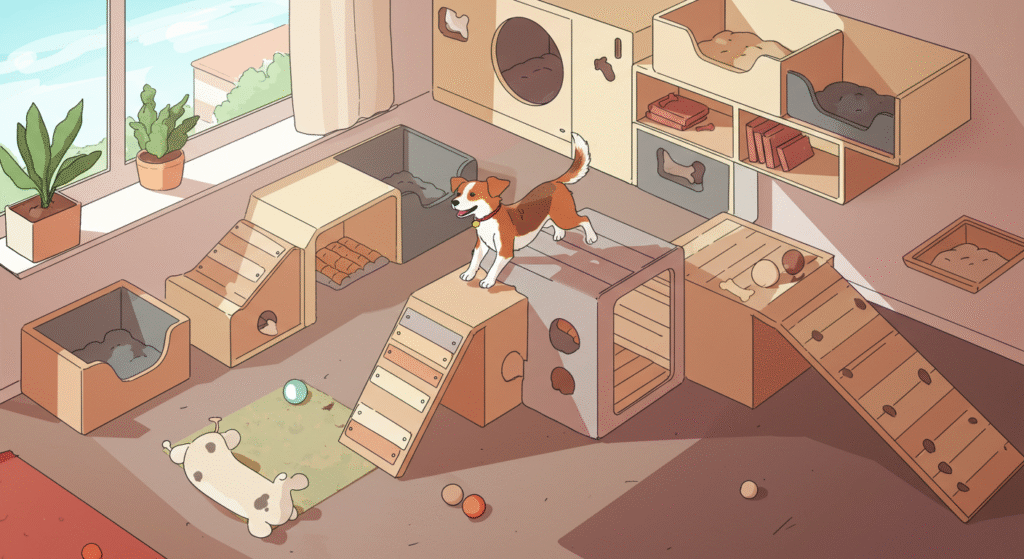
Maximizing Small Spaces for Big Fun
Small backyard ideas with dogs focus on vertical space and multi-functional features. Wall-mounted puzzle feeders save floor space while providing mental stimulation. Hanging rope toys utilize overhead areas.
Folding agility equipment stores easily when not in use. Stackable platforms create climbing challenges that pack away compactly. Retractable zip lines offer exercise opportunities in narrow spaces.
Space-saving strategies include:
- Corner installations that maximize dead space
- Foldable water features for hot days
- Modular play equipment that reconfigures easily
- Vertical gardens that add interest without taking floor space
Think of your small yard as a dog gym rather than a traditional backyard. Every square foot can serve multiple purposes with careful planning.
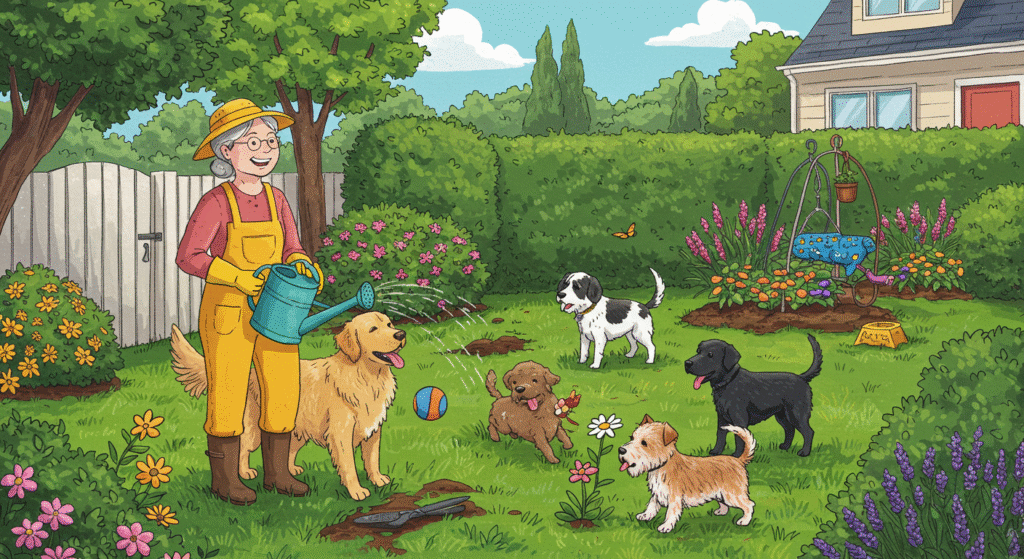
Maintaining a Beautiful Yard with Dogs
How to have a nice yard with dogs requires balancing aesthetics with functionality. Choose plants that withstand occasional trampling and resist damage from dog urine.
Install pathways where dogs naturally walk to prevent worn grass patterns. Use decorative borders to guide traffic flow away from delicate plantings. Select hardy, dog-safe plants like lavender, rosemary, and marigolds.
Design principles for dog-friendly landscaping:
- Group delicate plants in protected areas
- Use containers for valuable specimens
- Install automatic irrigation to maintain healthy growth
- Choose furniture materials that resist scratching and weather
Create separate zones for different activities. Designate areas for play, rest, and elimination to maintain order and cleanliness.
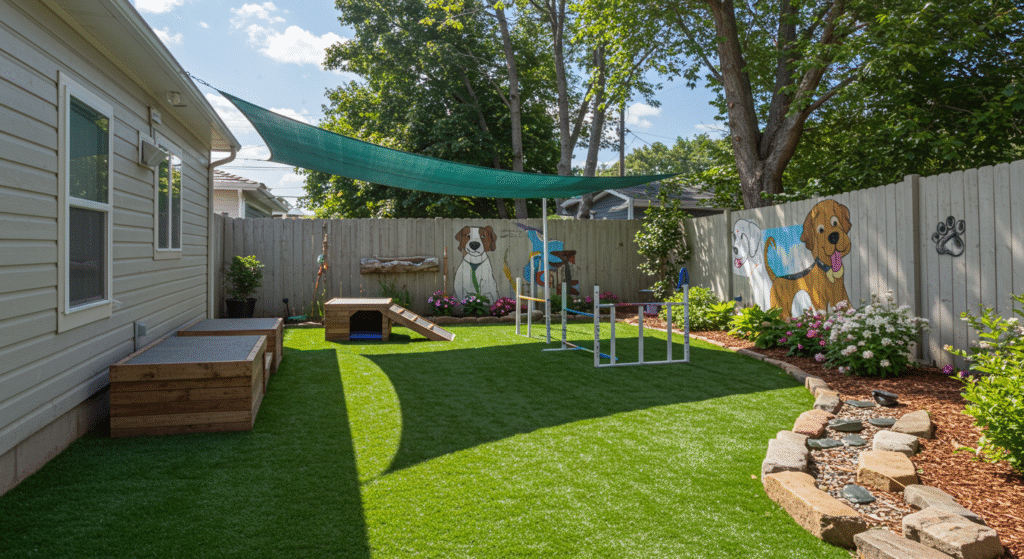
Creative Side Yard Transformations
Side yard ideas for dogs turn narrow, underused spaces into valuable play areas. These often-overlooked strips offer perfect opportunities for agility courses or sensory walks.
Install textured pathways using different materials like river rocks, mulch, and pavers. Dogs enjoy the varied sensations under their feet. Add mirrors at dog height to create visual interest and mental stimulation.
Side yard features that work well:
- Long, narrow digging trenches filled with sand
- Wall-mounted treat dispensers for solo play
- Shade sails stretched between structures
- Water misters for cooling during hot weather
Consider the width carefully. Narrow spaces work better for single-file activities, while wider areas accommodate group play and turning exercises.
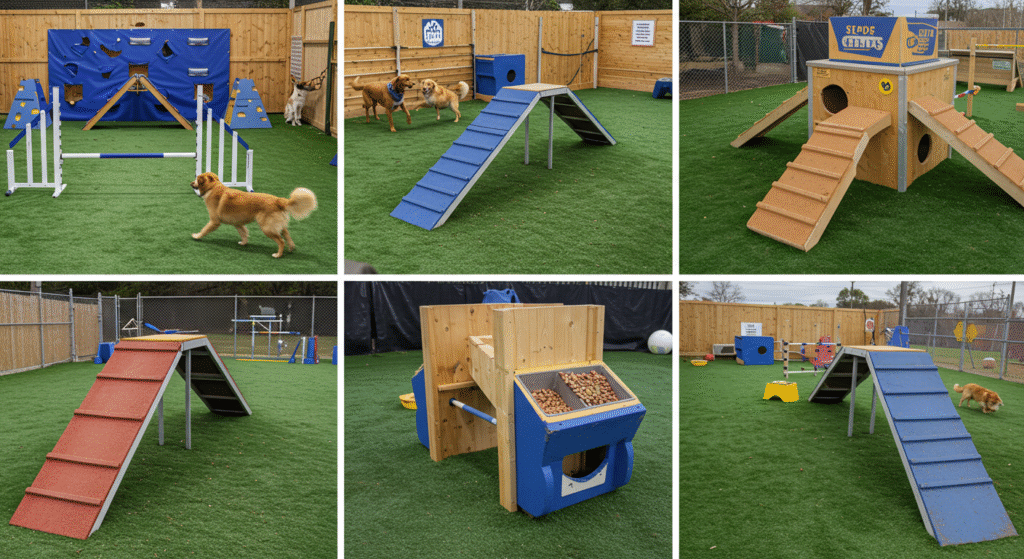
Interactive Training Zones
Transform sections of your yard into dedicated training areas. Fun dog yard ideas often combine entertainment with education for maximum benefit.
Set up obstacle courses using household items. Weave poles made from PVC pipes improve coordination. Balance beams constructed from planks develop confidence. Jump hurdles using adjustable pool noodles accommodate different skill levels.
Training zone essentials:
- Non-slip surfaces for safety during exercises
- Storage for treats and training equipment
- Clear sight lines for monitoring progress
- Adequate lighting for evening sessions
Rotate activities regularly to maintain interest and challenge your dog’s mind. Fresh challenges prevent boredom and encourage continued learning.
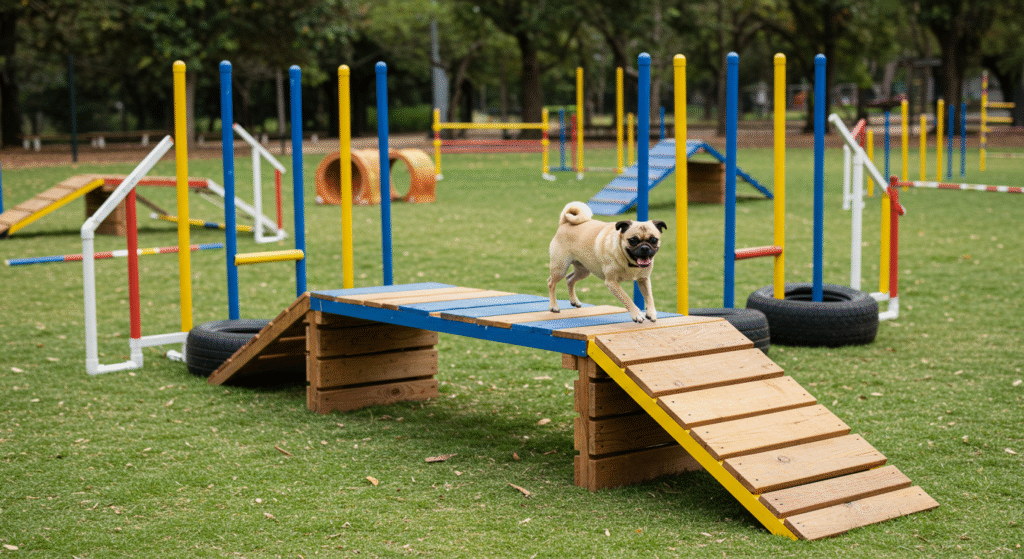
DIY Agility and Play Equipment
Building your own equipment saves money while customizing features for your specific dog and space. Start with simple projects like tire jumps or weave poles before attempting complex structures.
Use weather-resistant materials like treated lumber and galvanized hardware. Sand all surfaces smooth to prevent splinters. Paint with pet-safe finishes in bright colors for visual appeal.
Popular DIY projects include:
- A-frame ramps adjustable for different heights
- Teeter-totters with non-slip surfaces
- Tunnel systems using flexible drainage pipes
- Pause tables for obedience training
Safety remains paramount. Test all equipment yourself before letting your dog use it. Inspect regularly for wear and loose connections.
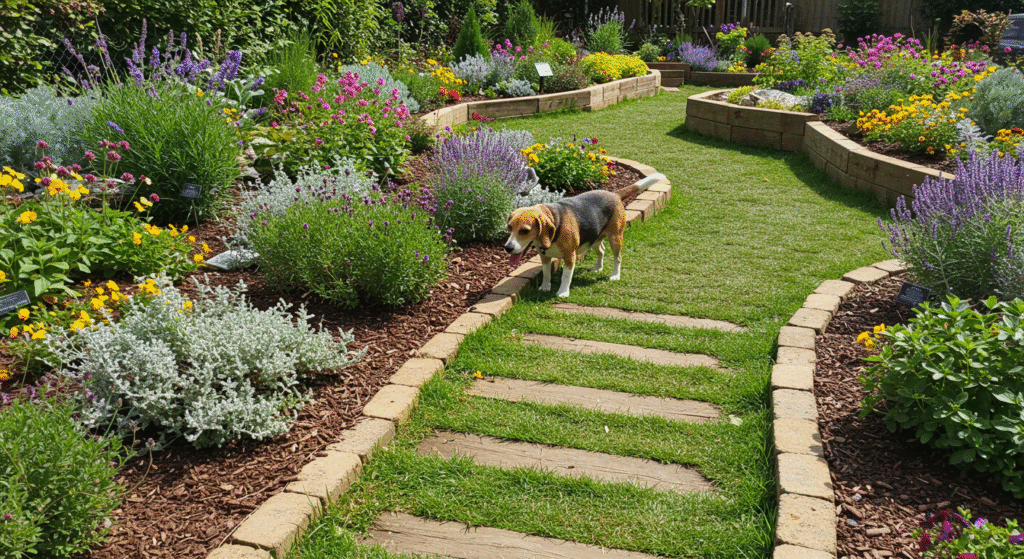
Sensory Gardens for Dogs
Dogs experience the world primarily through scent, so sensory gardens provide rich environmental enrichment. Plant dog-safe herbs like basil, parsley, and mint for interesting smells and occasional nibbling.
Create texture variety with different ground covers and pathway materials. Incorporate water features like shallow streams or bubbling fountains for auditory interest.
Sensory garden elements:
- Wind chimes at various heights for sound variety
- Textured stepping stones for paw stimulation
- Scented plants arranged in discovery trails
- Hidden treat dispensers for surprise rewards
Design paths that encourage exploration. Curved walkways maintain interest longer than straight lines. Add decision points where dogs choose their direction.
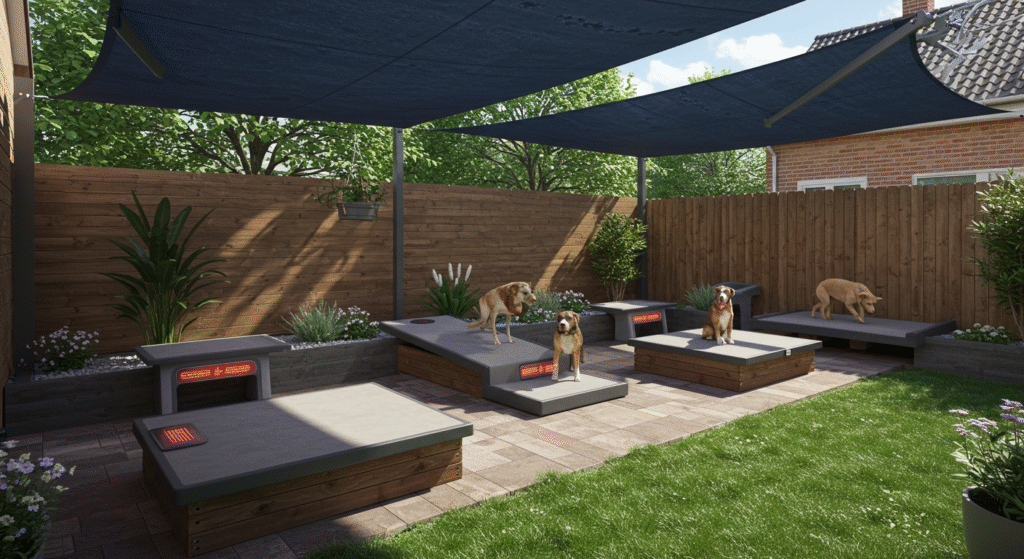
Weather-Proof Year-Round Activities
Seasonal changes shouldn’t limit outdoor fun. Summer requires shade structures and cooling stations. Winter demands wind breaks and warm resting areas.
Install retractable awnings or shade sails for hot days. Provide elevated platforms that stay dry during rain. Consider heated outdoor beds for cold weather comfort.
All-weather considerations:
- Drainage systems prevent muddy conditions
- Covered areas offer protection from elements
- Non-slip surfaces remain safe when wet
- Storage keeps equipment dry between uses
Plan activities appropriate for each season. Ice games work well in winter. Sprinkler play provides summer relief. Fall offers leaf pile adventures.
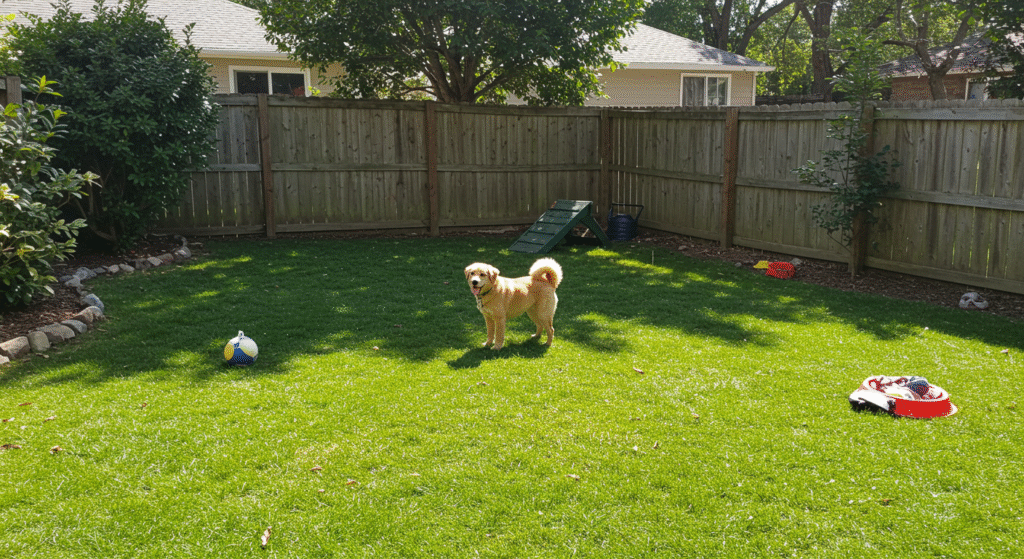
Safety Considerations and Hazard Prevention
Dog yard safety requires ongoing vigilance. Remove toxic plants like azaleas, oleander, and sago palms. Secure chemicals, tools, and small objects that pose choking hazards.
Fence height and gate security prevent escapes. Check regularly for gaps, loose boards, or damage from digging. Install spring-loaded hinges that close gates automatically.
Common yard hazards include:
- Cocoa mulch, which contains toxic compounds
- Compost piles that harbor dangerous bacteria
- Sharp edges on equipment or decorations
- Uneven surfaces that cause trips and falls
Conduct monthly safety inspections. Walk the perimeter checking for hazards. Test equipment stability and inspect for wear patterns.
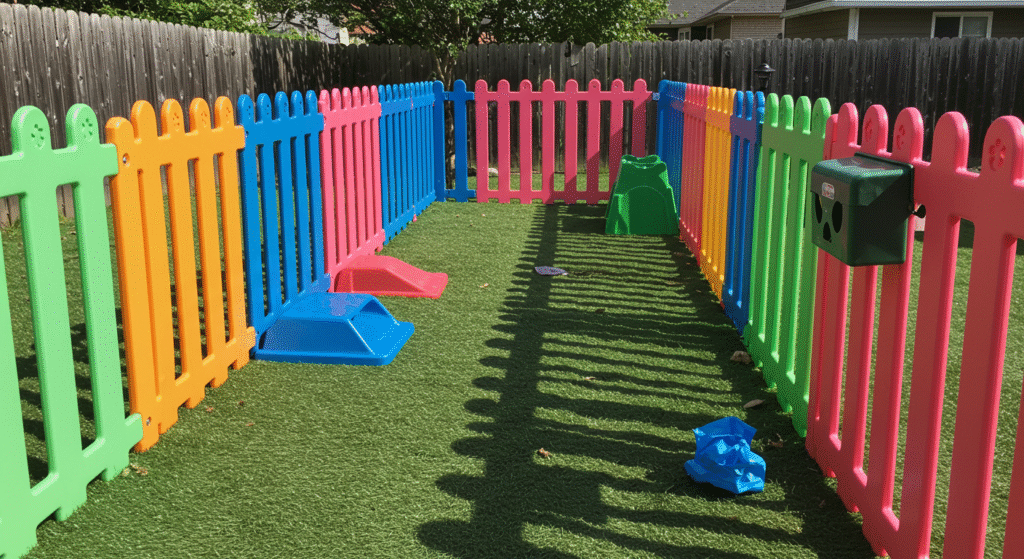
Maintenance Tips for Dog-Friendly Yards
Regular maintenance keeps your dog yard safe and attractive. Clean up waste promptly to prevent odors and health issues. Rinse areas where dogs urinate frequently to prevent grass burning.
Replace worn equipment before it becomes unsafe. Clean water features weekly to prevent algae growth. Trim plants regularly to maintain safe clearances around play areas.
Weekly maintenance tasks:
- Inspect all equipment for damage
- Clean and refill water features
- Remove any debris or foreign objects
- Check fence integrity and gate operation
Monthly tasks include deep cleaning surfaces, fertilizing plants, and reorganizing equipment storage. Annual tasks involve major repairs and equipment replacement.
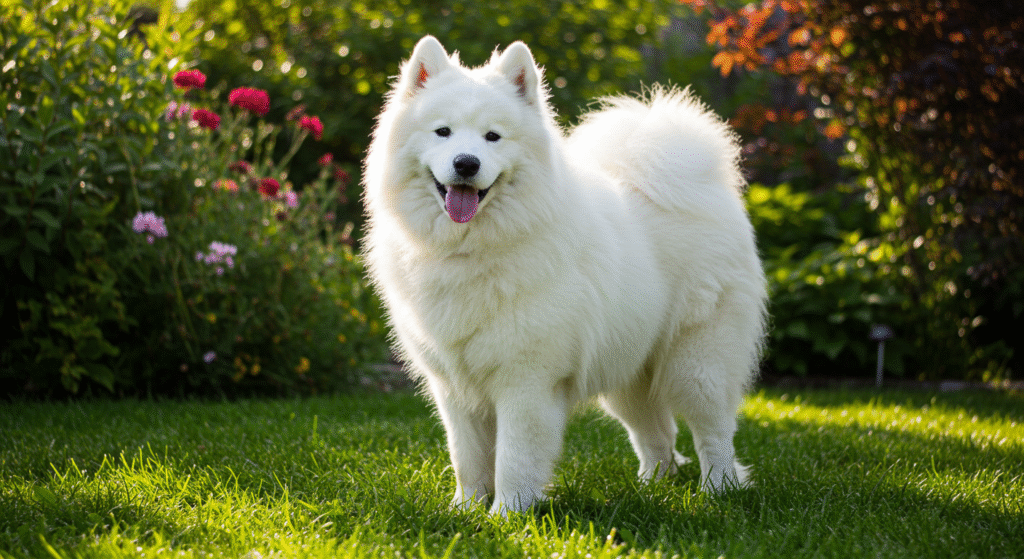
Dog Yard Ideas Comparison Table
| Feature Type | Budget Cost | Maintenance | Dog Benefit | Best For |
|---|---|---|---|---|
| Sand Digging Zone | Low ($20-50) | Monthly raking | Natural behavior outlet | Diggers, all sizes |
| Artificial Turf | High ($300-800) | Occasional rinsing | Clean play surface | Small yards, heavy use |
| Agility Course | Medium ($50-200) | Weekly inspection | Mental/physical exercise | Active dogs, training |
| Water Feature | Medium ($100-300) | Weekly cleaning | Cooling, sensory play | Hot climates, water lovers |
| Sensory Garden | Low ($30-100) | Seasonal pruning | Mental enrichment | All dogs, especially seniors |
| Shade Structure | Medium ($75-250) | Annual inspection | Weather protection | Hot climates, outdoor time |
| Storage Solutions | Low ($25-75) | Minimal | Organization | All yard types |
| Safety Fencing | High ($200-1000) | Annual checks | Security, containment | Escape artists, new dogs |
Frequently Asked Questions
How to make yard fun for dogs?
Create variety through different textures, heights, and activities. Rotate toys regularly to maintain novelty. Install puzzle feeders and hide treats throughout the space. Add obstacles like logs or rocks for climbing. Water features provide entertainment and cooling. Most importantly, spend time in the yard with your dog to make it a social experience.
How to keep a yard nice with dogs?
Establish designated areas for different activities – play zones, elimination areas, and rest spaces. Use durable, dog-friendly plants that recover quickly from trampling. Install pathways where dogs naturally walk to prevent worn grass patches. Regular maintenance including waste removal and surface cleaning prevents odors and damage. Choose materials that withstand dog activity like composite decking over soft wood.
What is the best fence alternative for dogs?
Wireless containment systems work well for trained dogs in open areas. Landscaping barriers using hedges or decorative fencing define boundaries without full enclosure. Tie-out systems provide controlled freedom in unfenced spaces. Motion-activated deterrents keep dogs away from specific areas. However, physical fencing remains the safest option for reliable containment, especially for escape-prone dogs.
What is the greatest danger for your dog in your yard?
Toxic plants pose the most serious threat, with species like sago palms, azaleas, and oleander causing severe illness or death. Other significant dangers include chemical treatments on lawns, compost piles containing toxic substances, and small objects creating choking hazards. Inadequate fencing leading to escapes also ranks high. Regular safety inspections and toxic plant removal are essential preventive measures.
What is the best ground cover for dog pee area?
Gravel or decomposed granite drain quickly and don’t retain odors like organic materials. Artificial turf designed for pets includes antimicrobial properties and superior drainage. For natural options, clover tolerates urine better than grass and self-repairs. Mulched areas work well if refreshed regularly. Avoid materials like bark chips or sand that absorb odors and require frequent replacement.
Do dogs get bored in the backyard?
Yes, dogs can become bored with unchanging environments. Static backyards with no variety or interaction opportunities lead to destructive behaviors. Prevent boredom by rotating toys, creating new challenges, and spending interactive time outdoors. Environmental enrichment through scents, textures, and activities keeps dogs mentally stimulated. Regular changes to the yard layout maintain interest over time.
Do dogs like being in the yard?
Most dogs enjoy yard time when the space meets their needs for comfort, stimulation, and safety. Dogs prefer yards with shade, water access, and interesting features over empty spaces. Social dogs especially enjoy yard time when family members participate. However, yards shouldn’t replace walks and other forms of exercise and socialization. The key is creating an engaging environment rather than just providing space.
What are dog rocks?
Dog rocks are igneous rocks placed in water bowls to allegedly reduce urine burn spots on grass. Manufacturers claim these rocks filter out impurities that cause lawn damage. However, scientific evidence doesn’t support these claims, and veterinarians generally don’t recommend them. Better solutions for urine burn include increasing water intake, training dogs to use specific areas, and selecting urine-tolerant ground covers.
How to make yard smell good with dogs?
Regular waste removal is the foundation of odor control. Rinse urine spots with water to dilute compounds that cause smells. Use enzymatic cleaners on surfaces where odors persist. Install drainage systems to prevent standing water. Natural deodorizers like baking soda work on hard surfaces. Strategic planting of aromatic herbs like lavender and rosemary adds pleasant scents while deterring pests. Proper ventilation and air circulation also help manage odors.
Final Thought
Maintaining a fresh-smelling yard with dogs requires consistency and a combination of strategies. By addressing waste promptly, utilizing natural remedies, and enhancing the environment with pleasant scents, you can create an outdoor space that’s enjoyable for both you and your pets.
